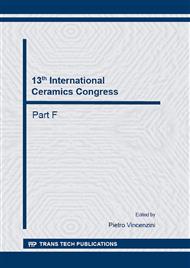p.248
p.258
p.264
p.272
p.282
p.288
p.294
p.301
p.310
Criteria to Select the Refractory Lining in Biomass Co-Combustion Reactors for Energy Production
Abstract:
The addition of biomass in co-combustion reactors for energy production is becoming a promising way for reducing the use of non-renewable fossil fuels. However the presence of alkalis in biofuel can degrade more rapidly the refractory lining of the combustion chamber. The alkalis can penetrate in the refractory and dissolve material components, forming new liquid phases that physically degrade the coherence of the material, increasing the risk of refractory failure.
Info:
Periodical:
Pages:
288-293
Citation:
Online since:
October 2014
Keywords:
Price:
Сopyright:
© 2014 Trans Tech Publications Ltd. All Rights Reserved
Share:
Citation:


